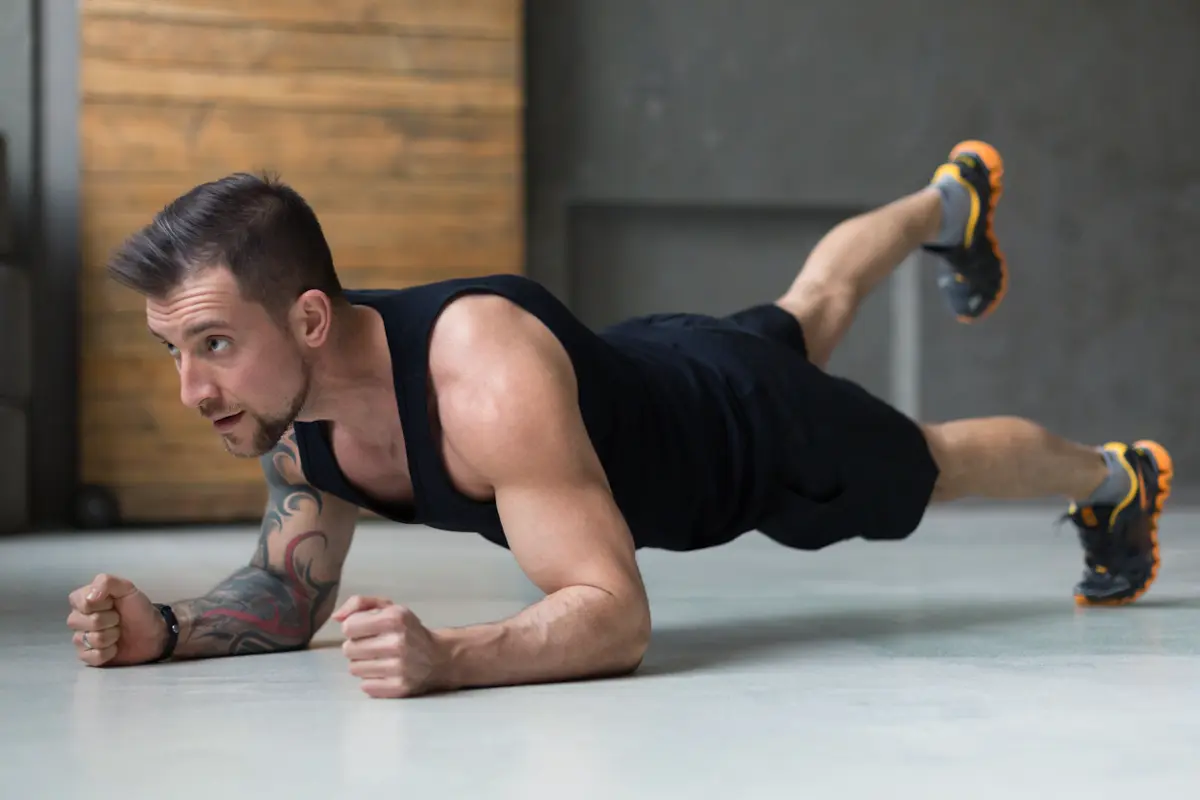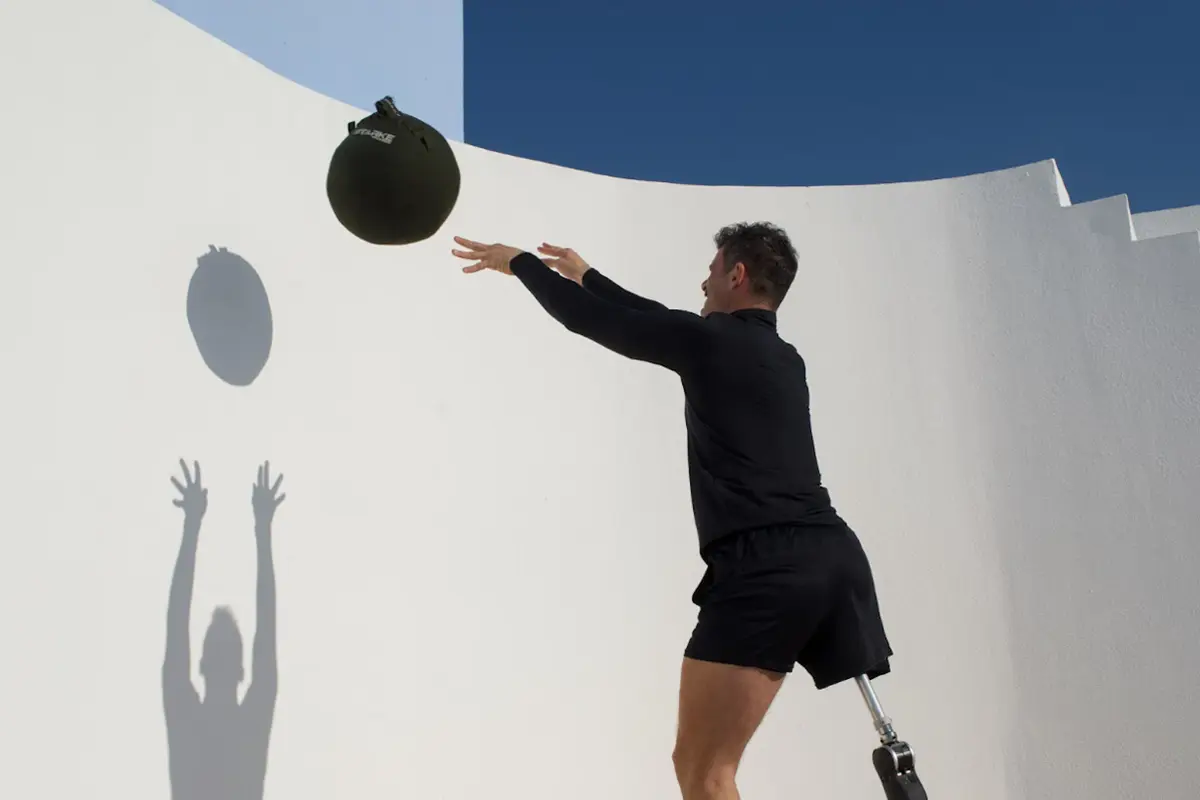Core Strengthening for Injury Prevention

What's In This Article
- Key Highlights
- Introduction
- Structure and Function of the Core
- The Link Between Core Strength and Injury Prevention
- Identifying Signs of Weak Core Muscles
- Core Strengthening Exercises
- Stabilization Training Techniques
- Including Core Exercises in Your Routine
- Conclusion
- Frequently Asked Questions
- References
- Resources

Core Strengthening for Injury Prevention
Key Highlights
- Core strength is essential for overall body stability and injury prevention.
- A strong core supports proper spine alignment and reduces lower back pain.
- The muscles include more than just abdominals, encompassing the pelvic floor, obliques, and erector spinae.
- Core training improves athletic performance, balance, and everyday functional movements.
- Weak core muscles can lead to poor posture, increased injury risk, and compromised physical performance.
- Progressive training involving varied exercises enhances neuromuscular efficiency and overall body control.
Introduction
To stay healthy and improve sports performance, strengthening the core and the gluteal muscles is vital to prevent injuries. The core includes the abdomen, lower back, and pelvis muscles, crucial for stability, movement, and improving range of motion. Training these muscles is a staple of disciplines like Pilates and yoga.
Strengthening these muscles helps reduce the risk of common injuries, especially in demanding activities like strength training. Strength here not only prevents injuries but also improves efficiency in movement.
Sue Falsone, a Clinical Specialist in Sports Physiotherapy and Nike Performance Council Member states, "If you think of your body as a wheel, the core is its hub".
As coaches at Sportive Tricks Strength, we've seen firsthand how important core training is for powerlifting. We work with athletes daily who want to push their limits safely, and we always emphasize that strong abdominals aren't just about aesthetics – it's your foundation for every lift.
When approaching a heavy squat or deadlift, your core keeps your spine stable and helps transfer power from your legs, including your quads, through your entire body. If you're struggling with your form, consider consulting a coach or physical therapist for guidance.

Structure and Function of the Core
The core is a complex group of muscles beyond the superficial abdominals on the front of your body. It includes:
- The pelvic floor
- Obliques
- Erector spinae
- Transversus abdominis
- Rectus abdominis.
Together, they provide stability and support to the body's central structure. Maintaining a neutral spine and rib cage position is crucial for preventing lower back pain by reducing stress on the lumbar spine.
- The core helps stabilize the spine and plays a role in correcting spinal alignment issues, offering therapeutic benefits to those with back problems.
- It facilitates efficient force transfer in daily activities and sports by connecting the upper and lower body. This coordination is vital for balance, precise movements, and proper posture (Rodriguez-Perea et al., 2023).
- It improves overall body functionality by emphasizing muscle group interconnectedness and holistic physical health.
Dr Jennifer Hopp, Program Director of the Women's Sports Medicine Program at the Wentworth-Douglass Hospital in New Hampshire, states that "a strong core helps stabilize the upper body and the pelvis while also supporting the low back, allowing an athlete to perform complex athletic movements that require coordination, balance, and technical skills".
The Link Between Core Strength and Injury Prevention
Establishing a Stable Foundation
- A stronger core is an essential foundation for nearly every movement the human body makes, offering advantages beyond athletic performance to include regular functional activities.
- Maintaining the stability and integrity of the pelvic, hip, and spinal areas, a strong midsection creates a stable base vital for injury prevention. This stability is important in high-intensity sports and simple daily actions like bending, lifting, and sitting.
Mitigating Knee Ligament Injuries
- Knee ligament injuries, especially those related to the anterior cruciate ligament (ACL), are common among athletes and the general population. A strong core is crucial in reducing the risk of these injuries.
- It minimizes unnecessary strain on the knee joints during dynamic actions by enhancing body movement control. For example, during twisting or lateral movements, a stable midsection helps evenly distribute forces throughout the lower body, decreasing the chances of overloading the knee ligaments (Jeong et al., 2021).
Reducing Lower Back Pain
- Lower back pain, a widespread issue affecting a significant portion of the population, can often be traced back to a weak core. The muscles of the trunk support the lumbar spine and quadratus lumborum muscles.
- When these muscles are underdeveloped, the spine bears excessive pressure, leading to discomfort and, in some cases, chronic pain conditions.
- Strengthening deep core muscles, mainly through exercises that promote a neutral spine position, enhances lumbar support and can significantly reduce lower back pain (Frizziero et al., 2021).
Core Stability and Injury Risk Reduction
- Stability is not just about muscle strength; it involves all the muscles" ability to act together to protect the body against undue stress and strain. This action is necessary for reducing the overall risk of injury.
- For example, in sudden, unexpected movements—such as in sports or during accidental trips and falls—a strong core can quickly activate to maintain balance and prevent falls, avoiding potential injuries (Attar and Husain, 2023).

Identifying Signs of Weak Core Muscles
Symptoms of Poor Core Stability
Recognizing the indicators of inadequate strength in this area is needed to address and mitigate potential health and performance issues. Key symptoms include:
- Poor Posture: A slouched or hunched posture is one of the most visible signs of weak midsection muscles. Poor core strength does not adequately support the upper body, leading to a forward-leaning stance that can exacerbate spinal stress and discomfort.
- Lower Back Pain: Frequently linked to a lack of core muscle support, lower back pain is a common ailment that plagues individuals with underdeveloped strength. Without a strong core to stabilize the lumbar region, the spine endures additional strain that can lead to persistent pain.
- Increased Propensity for Injuries: Weak core muscles contribute to a lack of overall body stability, heightening the risk of falls, strains, and sprains. The absence of a solid foundation makes the body more susceptible to injuries, especially in situations requiring balance and quick directional changes.
Impact on Performance and Daily Activities
- Sports Performance: A strong midsection is crucial for peak athletic performance. Sports and activities that demand power, agility, and balance depend on core strength for efficient movement. Athletes lacking midsection stability may struggle to reach optimal performance levels, requiring assistance with coordination and endurance.
- Daily Functionality: Simple tasks such as carrying groceries, climbing stairs, or standing for extended periods can become more difficult. The lack of core strength compromises the body's ability to perform these activities efficiently, leading to increased fatigue and the potential for injury during mundane actions.
John Gallucci Jr., the MLS Medical Coordinator for over 600 professional soccer players and a FOX Sports medical analyst, stresses the significance of core strength for soccer players. In a Coerver Coaching blog, he explained, "The core is where power, strength, endurance and balance originate. It is what helps us stand up, stay standing, propel forward into a walk, run or skip, change directions, stop at a moment's notice and breathe through it all".

Core Strengthening Exercises
Dr Jinger Gottschall, a Kinesiologist and Director of Sports Research at New Balance, recommends planks as a top exercise. In an article for The Health and Fitness Association website, he stated, "You recruit the three-dimensional core muscles from shoulder to hip from the back to the front and both sides".
Core Stability Exercises
- Plank: An exercise that engages the entire midsection. Start in a push-up position with your forearms on the ground, elbows under your shoulders, and legs extended behind you. Keep your body in a straight line from head to heels, engaging your abdominal muscles and pelvic floor. Hold this muscle contraction, focusing on maintaining a neutral spine and breathing steadily.
- Side Plank: This variation targets the obliques and helps improve lateral stability. Lie on your side with extended legs, propping your body up on your forearm, and stack your feet. Lift your hips until your body forms a straight line. Hold, then switch sides.
- Dead Bug: Begin on your back with your arms extended towards the ceiling and knees bent at 90 degrees. Slowly lower your right leg and opposite arm towards the floor, keeping your core engaged and lower back pressed into the ground. Return to the starting position and repeat on the opposite side.
- Bird Dog: Start on all fours in a tabletop position, ensuring your hands are under your shoulders and knees under your hips. Extend your right arm forward while stretching the left leg back. Focus on keeping your hips and shoulders square to the ground. Return to the starting position and alternate sides.
- Glute Bridge: Lie on your back with your knees bent and feet flat on the floor. Lift your hips towards the ceiling, squeezing your glutes at the top. Ensure your abdominal muscles are engaged, and your spine remains neutral throughout the movement.
Abdominal Bracing Techniques
- Abdominal Bracing: This technique involves tensing the abdominal muscles as if preparing for a punch. It can be practised in any position but is most effective when integrated into core exercises. Abdominal bracing enhances muscle engagement and protection for the lumbar spine during activities.
Proper Form and Pelvic Floor Engagement
- Maintaining a Neutral Spine: Throughout all exercises, it's crucial to maintain a neutral spine to prevent strain on the back. Avoid arching or rounding the back excessively.
- Correct Alignment: Ensure your body is aligned correctly, with your shoulders stacked over your hips and your hips over your knees (when applicable), to maximise the effectiveness of each exercise and reduce the risk of injury.
- Pelvic Floor Muscles: Activating the pelvic floor muscles is essential for stability. Imagine lifting the muscles as if trying to stop the flow of urine. Incorporate this subtle lift into your core exercises to strengthen the pelvic floor and enhance stability.
Stabilization Training Techniques
Advanced training techniques are essential for improving stability and strength (Bliven and Anderson, 2013). When done with good form, these methods challenge the muscles and enhance functional movement and athletic performance by engaging the body in various planes of motion.
Multi-Plane and Rotation Challenges
- Turkish Get-Up: A comprehensive exercise that integrates strength, mobility, and stability. Starting from lying down on a mat, the goal is to stand up while holding a weight overhead, moving through a series of controlled transitions. Start with the weight in your right hand for the first rep, then switch to the left for the next. This exercise engages the muscles in multiple planes, demanding balance, coordination, and strength.
- Rotational Medicine Ball Throws: Stand sideways near a wall, holding a medicine ball at waist level. Rotate your torso away from the wall, then explosively twist towards it, throwing the ball against it. Catch it on the rebound. This exercise enhances rotational strength and stability, critical for sports and activities requiring turning motions.

Leg Alternation and Hip Flexion
- Single-Leg Romanian Deadlift: This exercise demands balance and stability as you hinge at the hip, lifting one leg behind you while keeping the midsection engaged. It targets the core, glutes, and hamstrings, emphasising unilateral stability and hip flexion control. Use a dumbbell or resistance band.
- Hanging Leg Raises: Start by hanging from a pull-up bar, then raise your legs to form a 90-degree angle with your torso, keeping them straight. This exercise intensely works the abs, especially emphasising the lower abdominals and hip flexors.
Enhancing Core Endurance
- Plank Variations: Incorporate variations such as the forearm plank, high plank, side plank, and plank with leg lifts to challenge muscles over extended periods. These variations increase endurance and stability by forcing the core to adapt to different stresses and maintain activation without rest.
- Stability Ball Exercises: Exercises like stability ball pikes, rollouts, and stir-the-pot challenge you to maintain balance and control over an unstable surface, significantly enhancing core endurance and strength.
Importance of Comprehensive Abs Training
Exercises that challenge the muscles in various planes of motion are a great way to develop a genuinely functional and strong midsection.
- Activities involving alternating legs and hip flexion mimic natural movements, improving the core's ability to support the body in everyday tasks and athletic performance.
- Enhancing endurance prepares the muscles to maintain stability and strength over extended periods, which is necessary for high-intensity sports and daily activities.
- Advanced stability training techniques fortify the muscles and integrate the upper and lower body, ensuring a balanced and powerful foundation for all types of movements.
Including Core Exercises in Your Routine
Incorporating these strengthening and stability exercises into a workout regimen doesn't just mean adding a few isolated movements like crunches at the end of a session; it requires a strategic approach to ensure these exercises engage all the muscle groups, enhance overall fitness, and support injury prevention in everyday life, especially for those with low back pain.
Building a Solid Foundation
- Start with the Basics: Before trying advanced exercises, establish a solid base of strength with fundamental movements like planks, bridges, and bird dogs. These exercises lay the groundwork for more complex movements by teaching proper engagement and stabilizing these muscles.
- Incorporate This Work Early: Begin your workout sessions with these exercises when your energy levels are highest. This prioritisation ensures optimal focus on form and engagement, setting a solid foundation for the rest of your training.
Central Nervous System Engagement
- Understand the CNS Role: The central nervous system (CNS) is critical in training by coordinating muscle activation and ensuring stability across various movements. Training the CNS through these exercises enhances neuromuscular efficiency, improving movement quality and injury resilience.
- Incorporate Neuromuscular Activation: Include exercises that require balance and precision, such as single-leg movements or stability ball exercises, to engage the CNS actively. This approach strengthens the midsection muscles and enhances overall neuromuscular control and coordination.
Progressive Overload and Exercise Progression
- Gradually Increase Intensity: As with any training regimen, applying the principle of progressive overload to these exercises is essential. Gradually increase the difficulty of exercises by adding more repetitions, extending hold times, or incorporating unstable surfaces to challenge the muscles further.
- Responsibly Progress Exercises: Listen to your body and progress exercises based on your fitness level and strength. Jumping too quickly into advanced exercises without proper preparation can lead to injury and setbacks.
- Diversify Your Training: To avoid plateaus and continuously challenge your muscles, regularly vary the exercises in your routine. To ensure a well-rounded development, incorporate movements targeting stability, endurance, and power.
Integration into Daily Activities
- Apply Engagement Outside the Gym: Practise engaging your core during everyday activities, like standing, walking, or lifting objects. This constant mindfulness of muscle activation translates to better posture, reduced injury risk, and improved performance in daily life.
Conclusion
The core is vital for physical health, supporting movement and preventing injuries. Strengthening enhances balance, supports the spine, and improves daily tasks and sports performance. It is crucial for a pain-free life and injury prevention.
Embrace this training as a foundational fitness element for overall well-being. Integrating the exercises reduces injury risks and boosts performance. Strengthen your midsection muscles to achieve optimal health and performance levels.
Frequently Asked Questions
Why is core strength necessary?
It is crucial for overall stability, injury prevention, proper posture, and supporting spine health during physical activities and everyday movements.
How often should I do core exercises?
Aim to incorporate these exercises 2-3 times per week, starting with basic movements and gradually progressing in intensity and complexity.
Can core training help reduce lower back pain?
Yes, strengthening these muscles, especially those supporting the lumbar spine, can significantly reduce lower back pain and provide better spinal support.
What are the signs of a weak midsection?
Common signs include poor posture, frequent lower back pain, increased injury susceptibility, and difficulty maintaining balance during physical activities.
Do I need special equipment for core exercises?
No, many effective exercises like planks, bird dogs, and glute bridges require no equipment. Optional tools like stability balls can add variety and challenge.
References
- Frizziero, A., Pellizzon, G., Vittadini, F., Bigliardi, D., & Costantino, C. (2021). Efficacy of core stability in non-specific chronic low back pain. Journal of Functional Morphology and Kinesiology, 6(2), 37.
- Jeong, J., Choi, D. H., & Shin, C. S. (2021). Core strength training can alter neuromuscular and biomechanical risk factors for anterior cruciate ligament injury. The American Journal of Sports Medicine, 49(1), 183-192.
- Hung, K. C., Chung, H. W., Yu, C. C. W., Lai, H. C., & Sun, F. H. (2019). Effects of 8-week core training on core endurance and running economy. PLoS One, 14(3), e0213158.
- Rodriguez-Perea, Á., Reyes-Ferrada, W., Jerez-Mayorga, D., Chirosa Ríos, L., Van den Tillar, R., Chirosa Ríos, I., & Martínez-García, D. (2023). Core training and performance: A systematic review with meta-analysis. Biology of Sport, 40(4), 975-992.
- Saleh Al Attar, W., & Husain, M. A. (2023). Effectiveness of injury prevention programs with core muscle strengthening exercises to reduce the incidence of hamstring injury among soccer players: A systematic review and meta-analysis. Sports Health, 15(6), 805-813.
- Huxel Bliven, K. C., & Anderson, B. E. (2013). Core stability training for injury prevention. Sports Health, 5(6), 514-522.